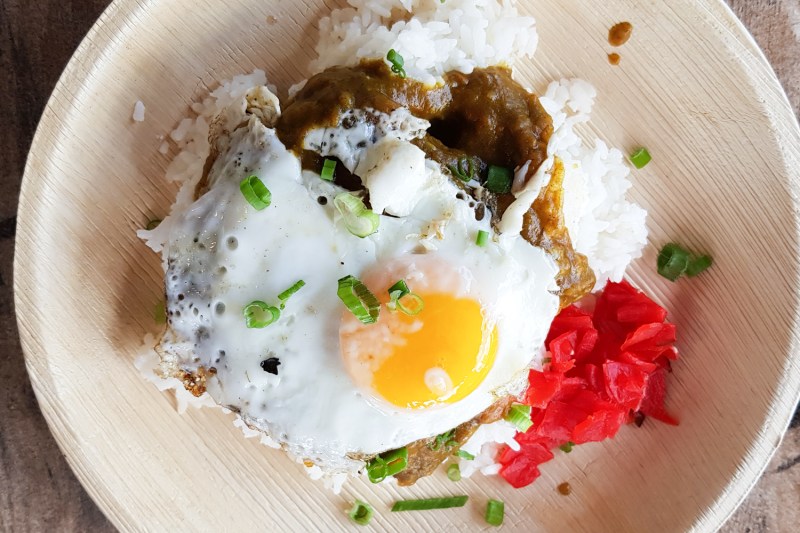As we prepare to change the clocks and settle into the dark season, Hawaii looks all the brighter. The Rainbow State’s reliably warm climate, unrivaled beaches, and small town culture are enough to make you salivate.
With the pandemic still afoot and travel not yet the safest, we’re forced to find more creative ways of exploring faraway places. One great method is by way of food. Hawaiian cuisine is not quite like anything else in the states, a mix of fresh seafood, pork, tropical fruit, and more, all influenced by a handful of Asian cultures. In short, it’s way more than just refreshing shave ice and spam.

As you look to visit Hawaii, if only by way of takeout or a meal you prepare at home, look to these distinctive foods:
Loco Moco
Unbelievably satisfying, Loco Moco is built for any meal of the day. It’s a filling mix of rice hit with a hamburger patty or two and some fried eggs. Even better, it’s all doused in a rich brown gravy. It’s pretty much a deconstructed breakfast burger with the rice serving its greatest purpose — sponging up all of the gravy and circulating those flavors evenly throughout the bowl. It’s even better with a side of macaroni salad, which is fairly commonplace on the islands.
Poke
With an abundance of seafood in its backyard and significant Japanese influence, it’s no wonder there’s a real sushi scene in Hawaii. Poke is all about fresh, often made from tuna, salmon, or squid and cut into cubes and seasoned. Umami notes abound, as the fish is usually treated to seaweed, salt, or kikui nut. As Asian emigrants settled in Hawaii, other ingredients became popular in poke, like soy sauce and scallions. It’s wonderful atop some rice with an ice cold beer, preferably on a lazy beach somewhere (but at home in front of the television watching Forgetting Sarah Marshall is almost as good).
Lau Lau
It can be a tourist trap of sorts but the Hawaiian luau, even if at your hotel, is a feel-good experience. One of the staple entrees is usually Lau Lau, or slow-cooked fatty pig and often butterfish wrapped in leaves and cooked for an extended period in a subterranean oven called an imu. It’s a blast to try at home, even if you don’t have traditional ti leaves and prefer to speed up the process with a modern cooking device. Check out this cool video for a quick tutorial on re-creating the dish on your own, using substitute wrapping options like collard greens or tin foil.
Saimin
This contemporary ramen is most closely related to traditional Chinese cuisine. But given the eclectic makeup of the Hawaiian agricultural scene circa mid-19th century (with laborers hailing from the Philippines, Korea, Japan, Portugal, as well as China) it’s a diverse dish indeed. Today, it has become so popular that even McDonald’s makes a version of it in Hawaii. Essentially a noodle soup, saimin tends to involve a shrimp-centric broth and is treated to toppings like nori or sliced egg. Locals like to throw some grilled burgers or skewered teriyaki beef on the side.
Mahi Mahi
If you haven’t seen a Mahi Mahi, Google it as it’s an incredible fish. It’s vastly available in the warm waters of Hawaii and can be enjoyed in so many ways, from fish tacos to blackened and hit with a nice mango salsa. We like it Maui style, straight off the grill and hit with a combination of honey, teriyaki sauce, sesame seeds, and butter. It can also stand up to tomato sauce and can be plugged in nicely to a lot of Italian-inspired pasta dishes.
Poi
It’s not the most visually appetizing Hawaiian food out there but Poi has been popular on the islands for a long time. An earthy-purple paste, it’s made from the taro root and is a good source of starch much like potatoes on the mainland. When fermented, it can take on some yogurt-like sharpness and is often dealt a little bit of milk or sugar for balance. A common source of protein served with poi is lomi salmon. You can find the stuff in most specialty stores or you can make it yourself with some taro and a good old fashioned mortar and pestle.


